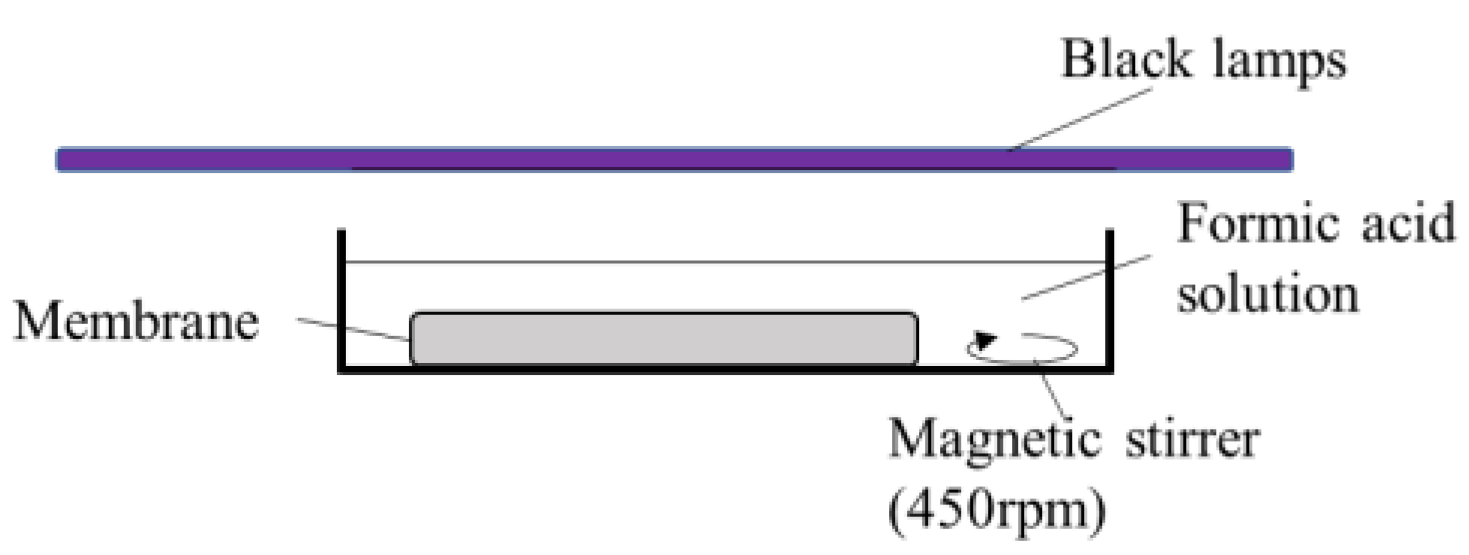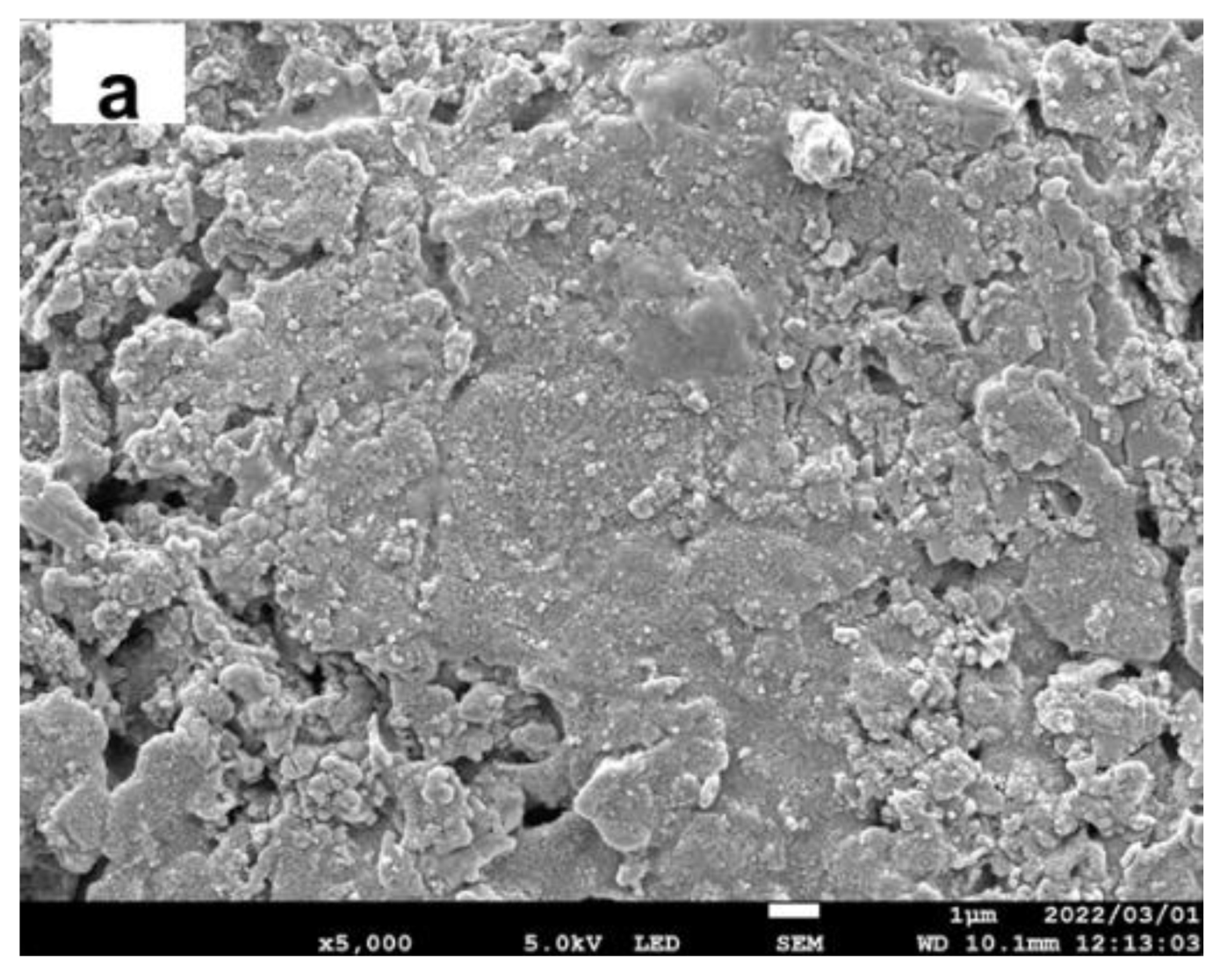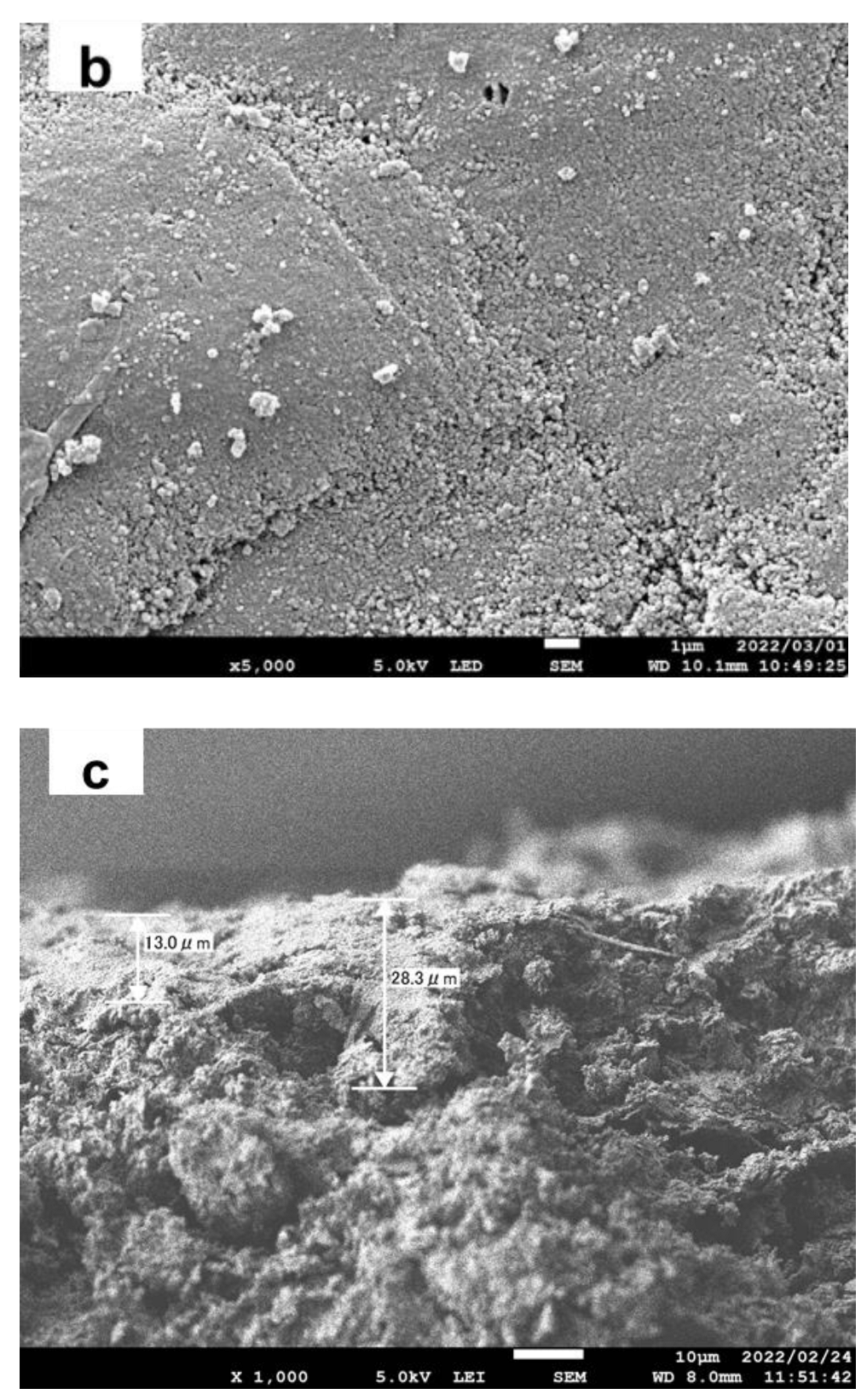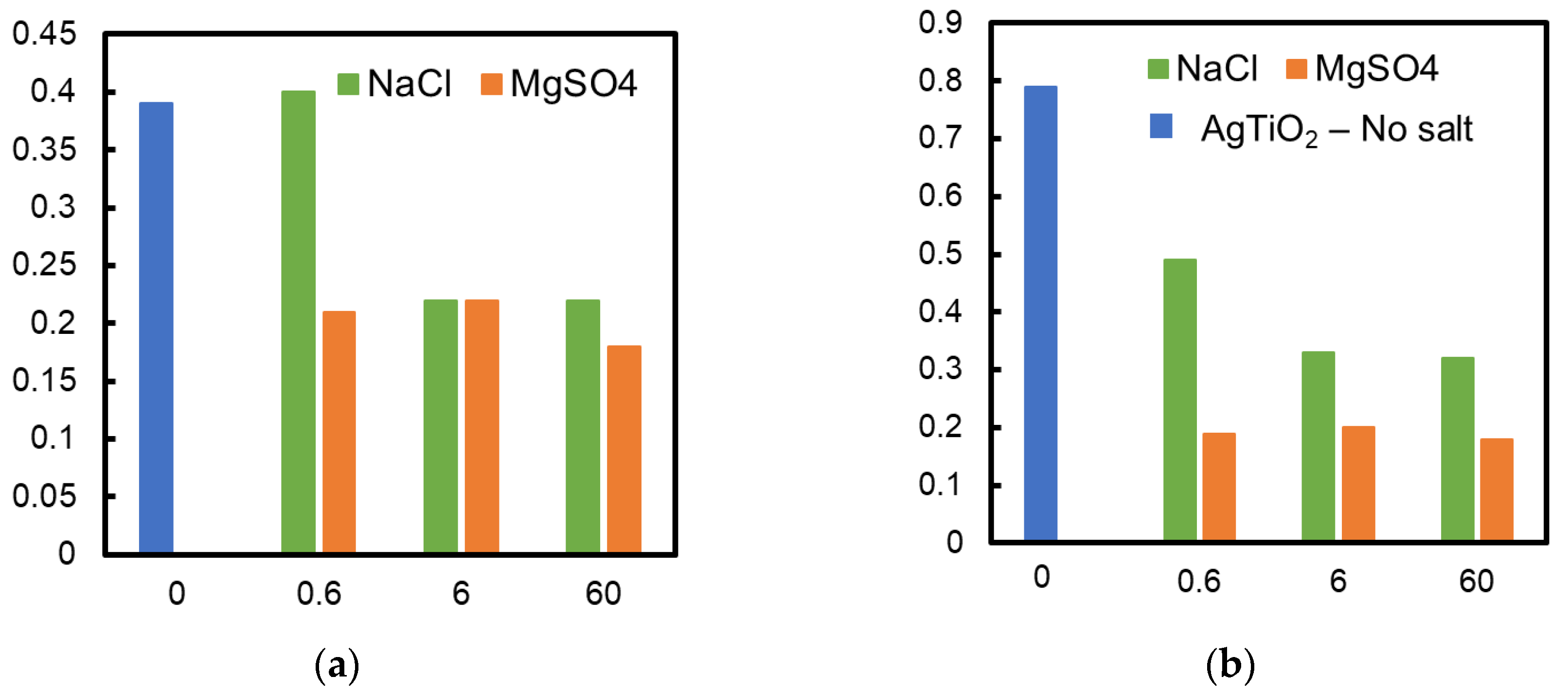Influence of Salts on the Photocatalytic Degradation of Formic Acid in Wastewater
Abstract
1. Introduction
2. Materials and Methods
3. Results and Discussion
3.1. Influence of Silver Deposition
3.2. Effect of Salinity on the Photocatalytic Performance
4. Conclusions
Supplementary Materials
Author Contributions
Funding
Institutional Review Board Statement
Informed Consent Statement
Data Availability Statement
Conflicts of Interest
References
- He, H.; Chen, Y.; Li, X.; Cheng, Y.; Yang, C.; Zeng, G. Influence of salinity on microorganisms in activated sludge processes: A review. Int. Biodeterior. Biodegrad. 2016, 119, 520–527. [Google Scholar] [CrossRef]
- Béziat, J.-C.; Besson, M.; Gallezot, P.; Durécu, S. Catalytic Wet Air Oxidation of Carboxylic Acids on TiO2-Supported Ruthenium Catalysts. J. Catal. 1999, 182, 129–135. [Google Scholar] [CrossRef]
- Xie, L.; Lu, Q.; Mao, X.; Wang, J.; Han, L.; Hu, J.; Lu, Q.; Wang, Y.; Zeng, H. Probing the intermolecular interaction mechanisms between humic acid and different substrates with implications for its adsorption and removal in water treatment. Water Res. 2020, 176, 115766. [Google Scholar] [CrossRef] [PubMed]
- Rodríguez, A.; Ovejero, G.; Romero, M.; Díaz, C.; Barreiro, M.; García, J. Catalytic wet air oxidation of textile industrial wastewater using metal supported on carbon nanofibers. J. Supercrit. Fluids 2008, 46, 163–172. [Google Scholar] [CrossRef]
- Zou, L.Y.; Li, Y.; Hung, Y.-T. Wet Air Oxidation for Waste Treatment. In Advanced Physiochemical Treatment Technologies; Wang, L.K., Hung, Y.-T., Shammas, N.K., Eds.; Handbook of Environmental Engineering; Humana Press: Totowa, NJ, USA, 2007. [Google Scholar]
- Kumakiri, I.; Hokstad, J.; Peters, T.A.; Melbye, A.G.; Ræder, H. Oxidation of aromatic components in water and seawater by a catalytic membrane process. J. Pet. Sci. Eng. 2011, 79, 37–44. [Google Scholar] [CrossRef]
- Iojoiu, E.E.; Walmsley, J.C.; Raeder, H.; Miachon, S.; Dalmon, J.-A. Catalytic membrane structure influence on the pressure effects in an interfacial contactor catalytic membrane reactor applied to wet air oxidation. Catal. Today 2005, 104, 329–335. [Google Scholar] [CrossRef]
- Furtado, R.X.D.S.; Sabatini, C.A.; Zaiat, M.; Azevedo, E.B. Perfluorooctane sulfonic acid (PFOS) degradation by optimized heterogeneous photocatalysis (TiO2/UV) using the response surface methodology (RSM). J. Water Process. Eng. 2021, 41, 101986. [Google Scholar] [CrossRef]
- Lee, S.-Y.; Park, S.-J. TiO2 photocatalyst for water treatment applications. J. Ind. Eng. Chem. 2013, 19, 1761–1769. [Google Scholar] [CrossRef]
- Etacheri, V.; Di Valentin, C.; Schneider, J.; Bahnemann, D.; Pillai, S.C. Visible-light activation of TiO2 photocatalysts: Advances in theory and experiments. J. Photochem. Photobiol. C Photochem. Rev. 2015, 25, 1–29. [Google Scholar]
- Khdary, N.H.; Alkhuraiji, W.S.; Sakthivel, T.S.; Khdary, D.N.; Salam, M.A.; Alshihri, S.; Al-Mayman, S.I.; Seal, S. Synthesis of Superior Visible-Light-Driven Nanophotocatalyst Using High Surface Area TiO2 Nanoparticles Decorated with CuxO Particles. Catalysts 2020, 10, 872. [Google Scholar] [CrossRef]
- Sanzone, G.; Zimbone, M.; Cacciato, G.; Ruffino, F.; Carles, R.; Privitera, V.; Grimaldi, M. Ag/TiO2 nanocomposite for visible light-driven photocatalysis. Superlattices Microstruct. 2018, 123, 394–402. [Google Scholar] [CrossRef]
- Chen, H.; Zahraa, O.; Bouchy, M. Inhibition of the adsorption and photocatalytic degradation of an organic contaminant in an aqueous suspension of TiO2 by inorganic ions. J. Photochem. Photobiol. A Chem. 1997, 108, 37–44. [Google Scholar] [CrossRef]
- Makita, M.; Harata, A. Photocatalytic decolorization of rhodamine B dye as a model of dissolved organic compounds: Influence of dissolved inorganic chloride salts in seawater of the Sea of Japan. Chem. Eng. Process. Process Intensif. 2008, 47, 859–863. [Google Scholar] [CrossRef]
- Kumakiri, I.; Diplas, S.; Simon, C.; Nowak, P. Photocatalytic Membrane Contactors for Water Treatment. Ind. Eng. Chem. Res. 2011, 50, 6000–6008. [Google Scholar] [CrossRef]
- Pipelzadeh, E.; Derakhshan, M.V.; Babaluo, A.A.; Haghighi, M.; Tavakoli, A. Formic Acid Decomposition Using Synthesized Ag/TiO2 Nanocomposite in Ethanol-Water Media Under Illumination of Near UV Light. arXiv 2018, arXiv:physics/1811.12508. [Google Scholar]
- Tran, T.T.H.; Bui, T.T.H.; Nguyen, T.L.; Man, H.N.; Tran, T.K.C. Phase-pure brookite TiO2 as a highly active photocatalyst for the degradation of pharmaceutical pollutants. J. Electron. Mater. 2019, 48, 7846–7861. [Google Scholar]
- Kumakiri, I.; Murasaki, K.; Yamada, S.; Azzah Nazihah, C.A.R.; Ishii, H. A Greener Procedure to Prepare TiO2 Membranes for Photocatalytic Water Treatment Applications. J. Membr. Sci. Res. 2022, 8. in progress. [Google Scholar] [CrossRef]
- Chakhtouna, H.; Benzeid, H.; Zari, N.; Bouhfid, R. Recent progress on Ag/TiO2 photocatalysts: Photocatalytic and bactericidal behaviors. Environ. Sci. Pollut. Res. 2021, 28, 44638–44666. [Google Scholar] [CrossRef] [PubMed]
- Seery, M.K.; George, R.; Floris, P.; Pillai, S.C. Silver doped titanium dioxide nanomaterials for enhanced visible light photocatalysis. J. Photochem. Photobiol. A Chem. 2007, 189, 258–263. [Google Scholar] [CrossRef]
- Levard, C.; Mitra, S.; Yang, T.; Jew, A.D.; Badireddy, A.R.; Lowry, G.V.; Brown, G.E. Effect of Chloride on the Dissolution Rate of Silver Nanoparticles and Toxicity to E. coli. Environ. Sci. Technol. 2013, 47, 5738–5745. [Google Scholar] [CrossRef]
- Lee, H.-S.; Hur, T.; Kim, S.; Kim, J.-H.; Lee, H.-I. Effects of pH and surface modification of TiO2 with SiOx on the photocatalytic degradation of a pyrimidine derivative. Catal. Today 2003, 84, 173–180. [Google Scholar] [CrossRef]







| Membrane No. | Mass of Silver (mg) | k × 102 (min−1) | Coefficient of Determination (R2) |
|---|---|---|---|
| TiO2 | 0 | 0.39 | 0.942 |
| AgT1 | 0.03 | 0.57 | 0.962 |
| AgT2 | 0.15 | 0.78 | 0.976 |
| AgT3 | 0.37 | 0.50 | 0.963 |
| AgT4 | 3.1 | 0.48 | 0.975 |
| Solutions | Silver Concentration (mg/L) | |
|---|---|---|
| Dark | UV Irradiation | |
| Formic acid | 0.011 | 0.0038 |
| Formic acid + NaCl | 0.088 | 0.0037 |
| Formic acid + MgSO4 | 0.015 | 0.0034 |
Publisher’s Note: MDPI stays neutral with regard to jurisdictional claims in published maps and institutional affiliations. |
© 2022 by the authors. Licensee MDPI, Basel, Switzerland. This article is an open access article distributed under the terms and conditions of the Creative Commons Attribution (CC BY) license (https://creativecommons.org/licenses/by/4.0/).
Share and Cite
Che Abdul Rahim, A.N.; Yamada, S.; Bonkohara, H.; Mestre, S.; Imai, T.; Hung, Y.-T.; Kumakiri, I. Influence of Salts on the Photocatalytic Degradation of Formic Acid in Wastewater. Int. J. Environ. Res. Public Health 2022, 19, 15736. https://doi.org/10.3390/ijerph192315736
Che Abdul Rahim AN, Yamada S, Bonkohara H, Mestre S, Imai T, Hung Y-T, Kumakiri I. Influence of Salts on the Photocatalytic Degradation of Formic Acid in Wastewater. International Journal of Environmental Research and Public Health. 2022; 19(23):15736. https://doi.org/10.3390/ijerph192315736
Chicago/Turabian StyleChe Abdul Rahim, Azzah Nazihah, Shotaro Yamada, Haruki Bonkohara, Sergio Mestre, Tsuyoshi Imai, Yung-Tse Hung, and Izumi Kumakiri. 2022. "Influence of Salts on the Photocatalytic Degradation of Formic Acid in Wastewater" International Journal of Environmental Research and Public Health 19, no. 23: 15736. https://doi.org/10.3390/ijerph192315736
APA StyleChe Abdul Rahim, A. N., Yamada, S., Bonkohara, H., Mestre, S., Imai, T., Hung, Y.-T., & Kumakiri, I. (2022). Influence of Salts on the Photocatalytic Degradation of Formic Acid in Wastewater. International Journal of Environmental Research and Public Health, 19(23), 15736. https://doi.org/10.3390/ijerph192315736








